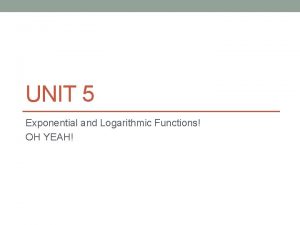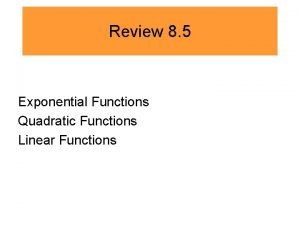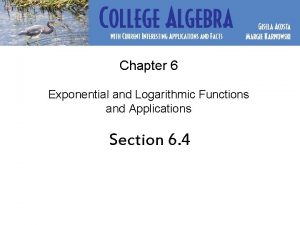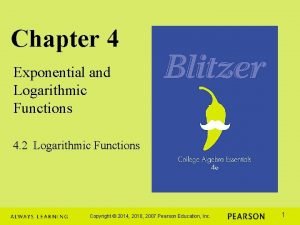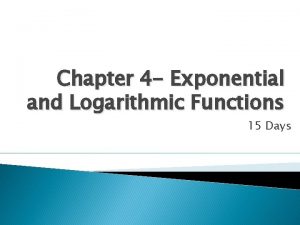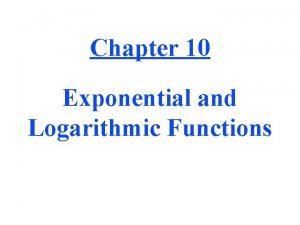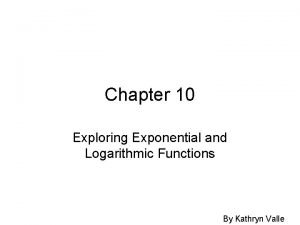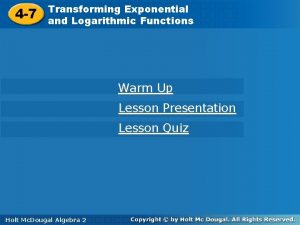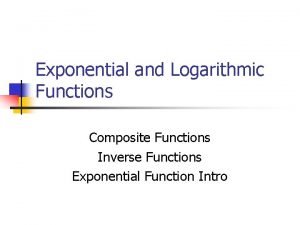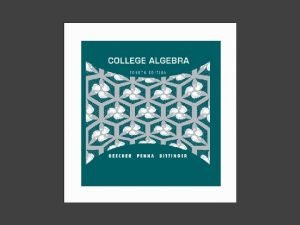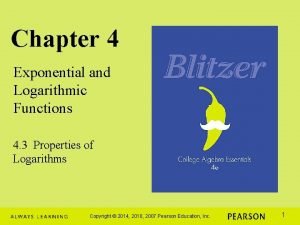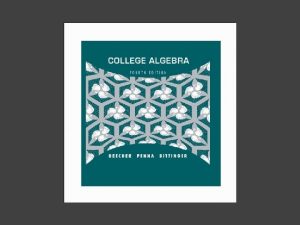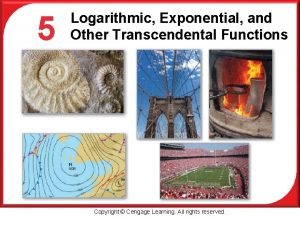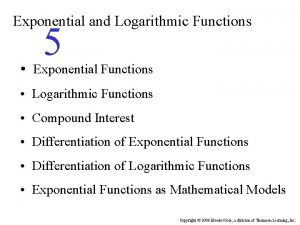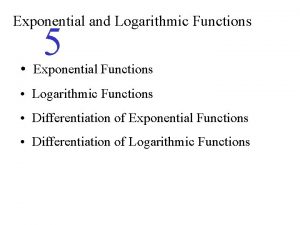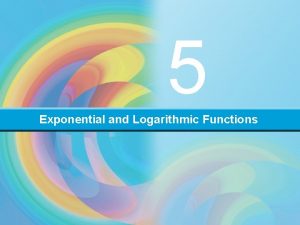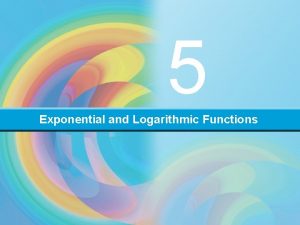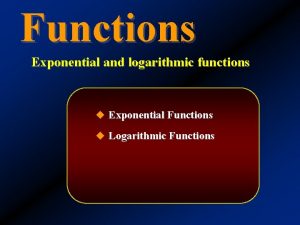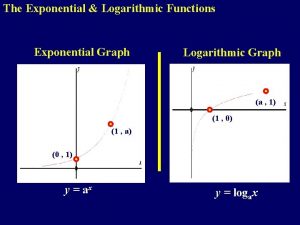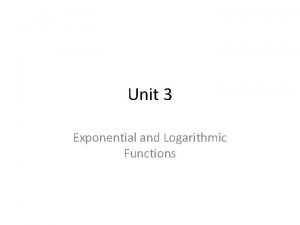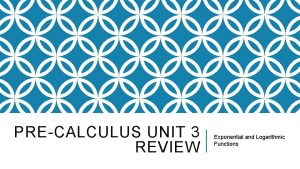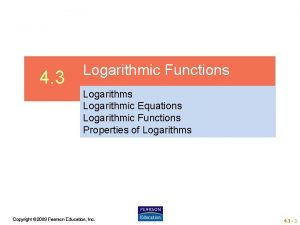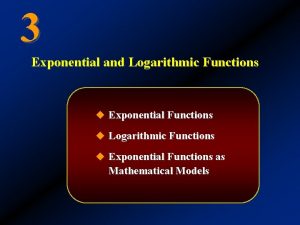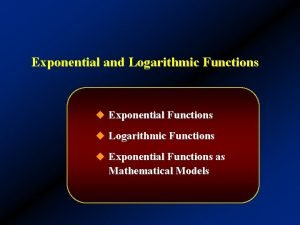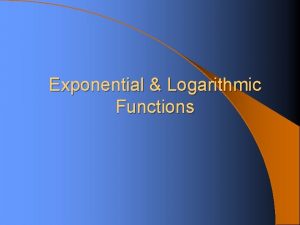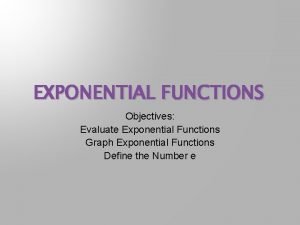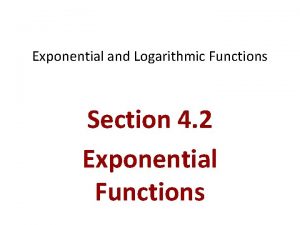Logarithmic Functions PRECALCULUS UNIT 3 EXPONENTIAL AND LOGARITHMIC
















- Slides: 16

Logarithmic Functions PRE-CALCULUS UNIT 3: EXPONENTIAL AND LOGARITHMIC FUNCTIONS

Overview of Logarithmic Functions

What is a logarithmic function?

Where do you see logarithmic functions? §Intensity of sound §Intensity of light §Richter Scale §Growth functions §p. H levels §Radioactive Decay §Carbon Dating

Relating Logarithmic and Exponential Forms

Relating Logarithmic and Exponential Forms §Evaluate: §Log 3 81 §Log 5 √ 5

Basic Properties of Logarithms

Apply Properties of Logarithms

Common Logarithm

Graphs of Logarithms

Graphs of Logarithmic Functions §Given the parent logarithmic function y = log x, find: §Domain and Range §X and Y intercepts §Asymptotes §End Behavior §Increasing and Decreasing §Maximums and Minimums

Logarithmic Growth Graph § Where y = logbx and b > 1 §Domain and Range §X and Y intercepts §Asymptotes §End Behavior §Increasing and Decreasing §Maximums and Minimums

Logarithmic Decay Graph §Where y = logbx and 0 < b < 1 §Domain and Range §X and Y intercepts §Asymptotes §End Behavior §Increasing and Decreasing §Maximums and Minimums

Using Logarithmic Functions

Solve

Solve §The amount of light A absorbed by a sample solution is given by A = 2 – log 100 T, where T is the fraction of the light transmitted through the solution. §If the percent of light transmitted through the first sample is 72%, how much light does the sample solution absorb to the nearest hundredth? §If the absorption of the second sample solution is. 174, what percent of the light entering the solution is transmitted?
 Unit 8 review logarithms
Unit 8 review logarithms Exponential and logarithmic functions unit test
Exponential and logarithmic functions unit test Linear quadratic absolute value and exponential functions
Linear quadratic absolute value and exponential functions Chapter 6 exponential and logarithmic functions answers
Chapter 6 exponential and logarithmic functions answers Chapter 4 exponential and logarithmic functions
Chapter 4 exponential and logarithmic functions Chapter 4: exponential and logarithmic functions answer key
Chapter 4: exponential and logarithmic functions answer key Pert formula
Pert formula Property of equality for exponential functions
Property of equality for exponential functions Transforming exponential and logarithmic functions
Transforming exponential and logarithmic functions Reverse exponential graph
Reverse exponential graph Lesson 5-2
Lesson 5-2 Expanding natural logarithms
Expanding natural logarithms Chapter 9 exponential and logarithmic functions answer key
Chapter 9 exponential and logarithmic functions answer key Chapter 9 exponential and logarithmic functions answer key
Chapter 9 exponential and logarithmic functions answer key Chapter 5 exponential and logarithmic functions answer key
Chapter 5 exponential and logarithmic functions answer key Logarithmic exponential and other transcendental functions
Logarithmic exponential and other transcendental functions Solving exponential and logarithmic functions calculator
Solving exponential and logarithmic functions calculator

